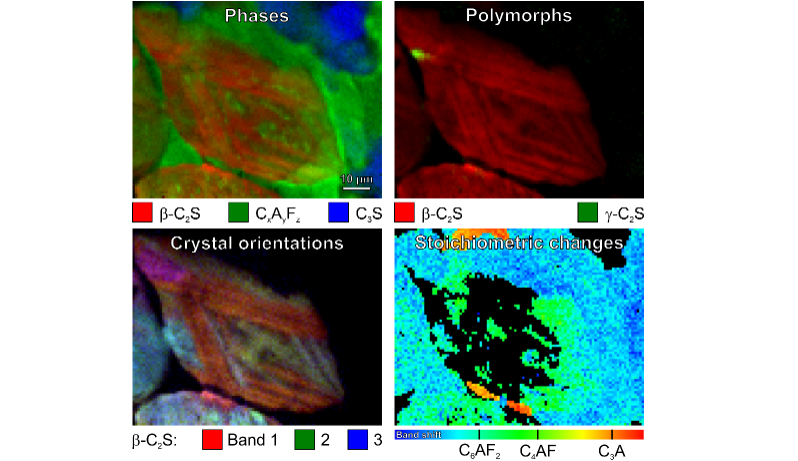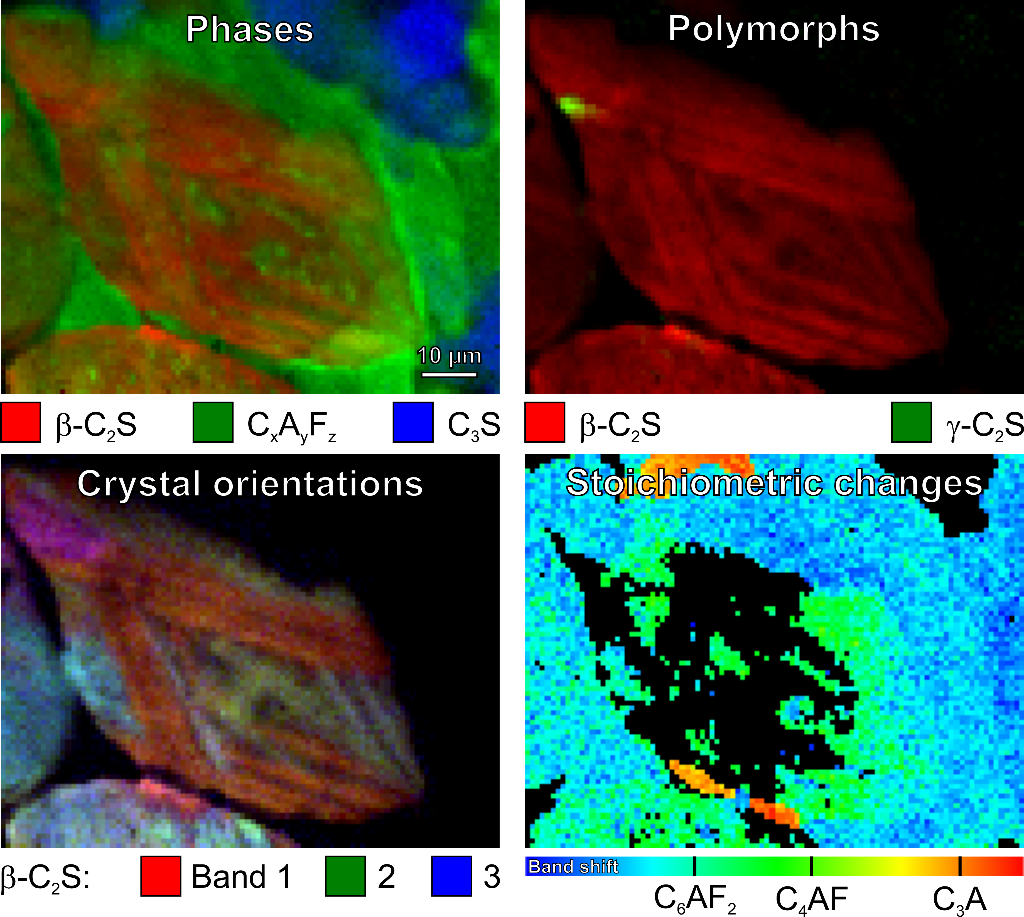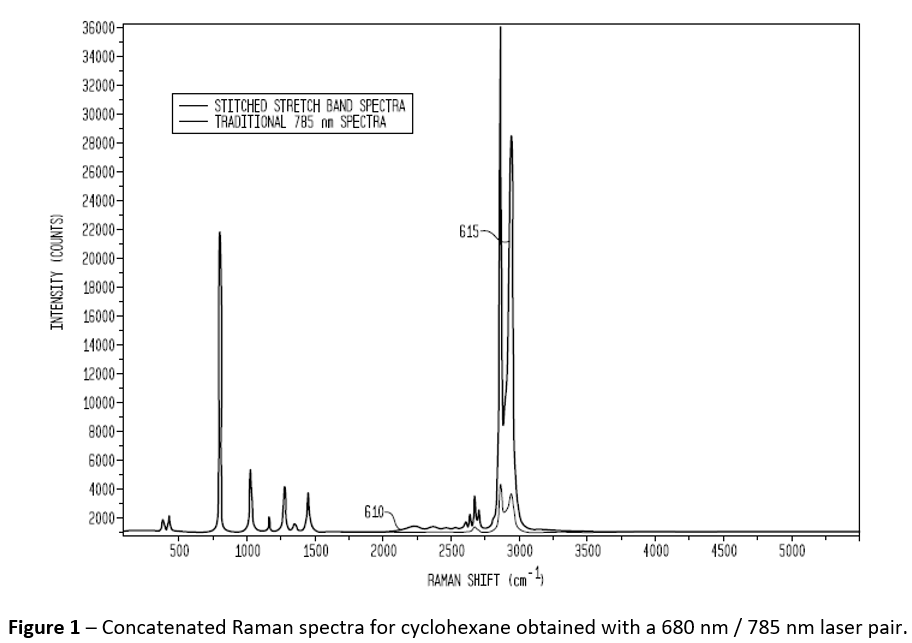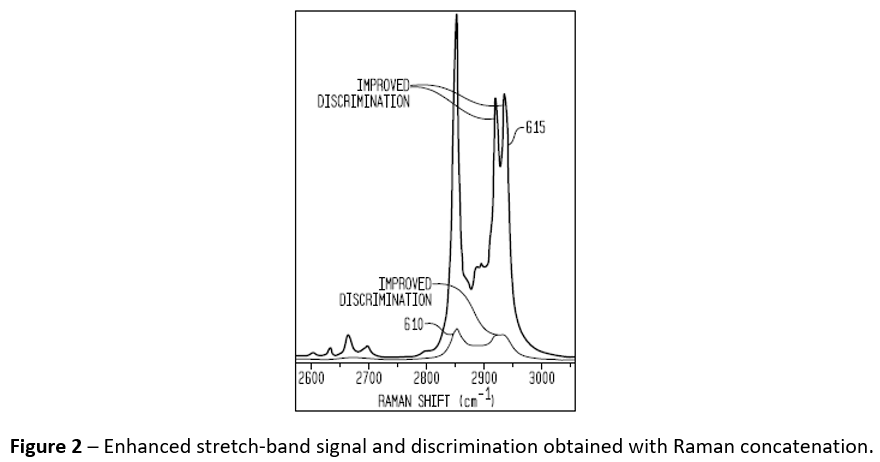

In previous blogs, we’ve explained the basics of Raman Spectroscopy, various trade-offs that exist when selecting the laser type (Multi-mode vs. Single-mode Lasers for Raman Spectroscopy), and laser wavelength (The Influence of Laser Wavelength on Raman Spectroscopy) for a particular sample. In this blog, the concept of “Raman Concatenation” is explained as a measurement technique utilized to overcome many of the previously outlined trade-offs.
In general, many Raman measurements suffer from fluorescence, which forces the use of longer excitation wavelength (lower photon energy) lasers to prevent the fluorescence signal from overwhelming the Raman signal. However, this results in reduced sensitivity of low-cost silicon CCD detectors at higher wavenumbers, making it difficult (or impossible) to observe the “stretch” portion of the Raman spectra (i.e. 2000 – 4000 cm-1). This reduced sensitivity is particularly true for excitation wavelengths greater than 760 nm. In addition, longer wavelength excitation lasers result in a reduced Raman excitation cross-section, making it challenging to observe and perform quantitative analysis in the “fingerprint” portion of the Raman spectra (i.e. 0 – 2000 cm-1). Raman concatenation overcomes these difficulties and allows a user to visualize the entire Raman spectra from 0 to 4000 cm-1 by utilizing two lasers with a single-grating-spectrometer and single probe. As an added benefit, since a shorter wavelength (higher photon energy) laser is used to collect the “stretch” portion of the spectrum, an enhanced signal is observed in this region, which allows for greater quantitative accuracy.
The first longer wavelength laser is selected to avoid fluorescence in the sample and to probe the “fingerprint” spectrum region. For the case of a 785 nm excitation laser, 0-2000 cm-1 corresponds to a single-grating-spectrometer detection wavelength of 785 nm to ~950 nm.
The second shorter wavelength laser is selected to probe the “stretch” region of the spectrum using the same spectrometer detection wavelengths. In this example, a 680 nm excitation laser corresponds to a 2000-4000 cm-1 Raman shift. The probe filters are selected to allow excitation and collection at both wavelengths.
In operation, each portion of the Raman spectra is sequentially collected, then the composite spectrum is “concatenated” or stitched together. Figure 1 below shows an example of a concatenated spectrum collected on cyclohexane using a 680 nm / 785 nm laser pair. Note, the significant enhancement and improved peak discrimination of the Raman signal strength in the stretch portion of the spectrum.

The ~ 10X enhanced signal and signal-to-noise ratio in the stretch region of the spectrum [Fig 2] makes Raman concatenation ideal for quantitative process control of CH, OH, and NH molecules in many applications. Finally, it should be noted that longer wavelength laser pairs can also be selected if fluorescence is still an issue at 680 / 785 nm. For example, a 735 / 830 nm laser pair can be utilized with a silicon-based spectrometer while an 830 / 1064 nm laser pair can be utilized with an InGaAs-based spectrometer.

RPMC offers over 50 standard wavelengths ranging from 405 nm to 1570 nm. Laser modules are available in single-mode (TEM00)/single-frequency (< 100 kHz FWHM) or multi-mode with power > 6W and can be ordered free-space or fiber-coupled. Our Hybrid External Cavity Laser (HECL) features high output powers, narrow spectral bandwidth and empowers the customer with the ability to define the wavelength and spectral bandwidth, along with output power. In addition to bringing outstanding products to the market, RPMC is committed to offering a world-class level of quality, customer care and service.
The R Series of wavelength-stabilized, single-mode and multimode laser diodes offer a narrow wavelength spectrum in wavelengths from 633nm thru 1064nm. Package options range from components as basic as a TO-56 or 14-pin BF packaged diodes, to OEM modules including electronics, to UL/CE and IEC certified turn-key systems.
For additional information about the R Series, including detailed technical specifications on these lasers, Click Here or talk to one of our knowledgeable Product Managers today by clicking the link below or calling us at 636.272.7227!

 SHIPS TODAY
SHIPS TODAY 